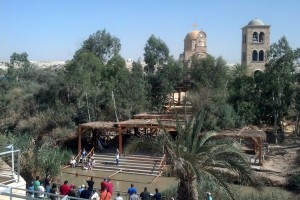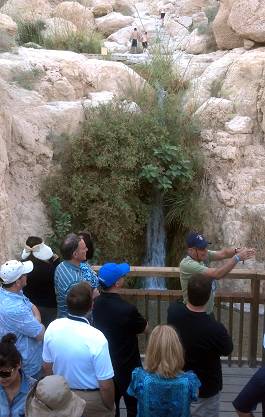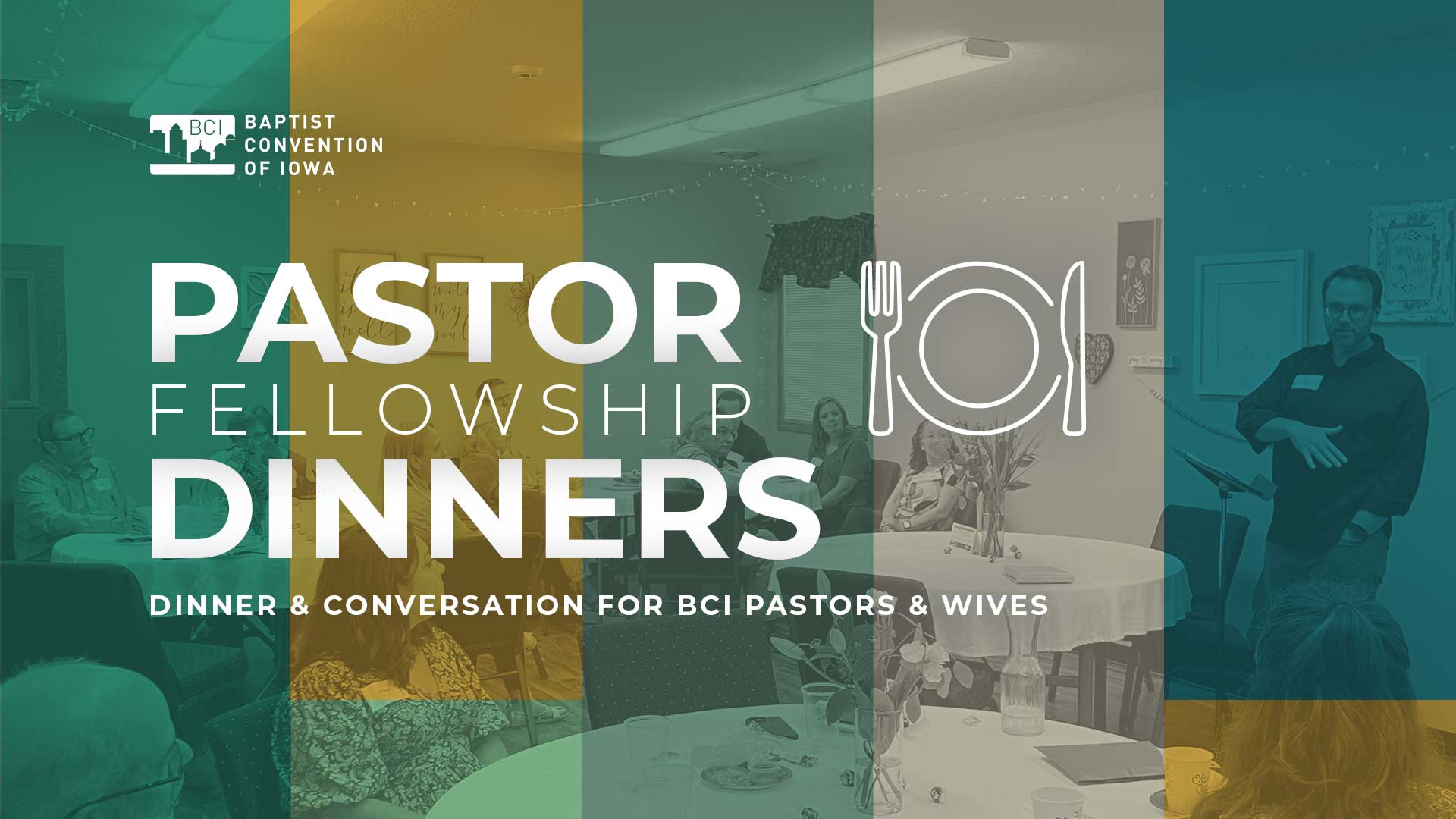by Mark Coppenger
NASHVILLE (BP) — I ventured to the Holy Land this summer for the seventh time, where it’s said “the Bible comes alive.” Indeed it does, but in a mixed way. There were, as always, both edifying and dispiriting aspects of the tour — for the Bible is not just a “happy talk” book but also one of stern declaration.

The Jordan River, the location of Jesus’ baptism, is marked today by sites like this one where tourists can be baptized. Photo by D. August Boto.
Some observations follow:
1. The Land Itself. From the Sea of Galilee in northern Israel to the Kidron Valley outside Jerusalem to the Judean Wilderness, the topography and scale bring color to Scripture. Modern development doesn’t change the bracing effect of a first look at the coastal cities of Jaffa and Maritime Caesarea, the lush expanse of the Jezreel Valley, the rushing streams of Dan, the waterfalls of En Gedi and the Dead Sea desolation viewed from Masada’s rock plateau.
2. Judeo-Christian Culture. You’d have to be literally or willfully blind to miss the differences between a culture oriented on the Bible and one oriented on the Koran. In Israel, much of the desert blooms. Not so much in Jordan. Yes, you can find thriving districts in the surrounding nations, but ever since my first visit to the Middle East nearly 50 years ago, I’ve felt like I was traveling from ancient Decapolis to Southern California when crossing from Muslim-majority lands into Israel.
3. Pharisees and Sadducees. Hasidic Jews (modern Pharisees if you will) are photogenic, with their traditional Jewish garb, but they’re an unsmiling bunch, quick to raise a ruckus if you transgress their sensitivities. (Just ask our ladies who got too close to the Wailing Wall). The biblical Sadducees were the secularists, and they abound in Israel today.
4. “Christian” Turfism. It is a disgrace to the cross that two of the most visited sites in Judea (the Church of the Nativity, marking the supposed location of Jesus’ birth, and the Church of the Holy Sepulchre, marking the supposed locations of His death and burial) are showcases of “Christian” pettiness, where various sects guard their floor space with a vengeance.
5. Fellowship of Travelers. Holy Land tours are as much a matter of conversation as sightseeing — over meals, waiting in line, on the bus, etc. And when one’s fellow visitors are Christians, the fellowship can be sweet, full of testimony, exhortation, encouragement and insight — from, in our case, cancer survivors, late converts, veteran ministers, seasoned parents and internationals.

The waterfalls of En Gedi, today a popular tourist destination in Israel, are in the region where David hid from King Saul in 1 Samuel 24. Photo by D. August Boto.
6. Hocus Pocus and Simony. There’s a lot of magical thinking over there, with pilgrims kissing stones, scooping up dirt and such. It makes you hunger for deeper transactions of the soul before God. And there’s no site too remote or implausible that someone is not willing to charge you entry, not only to the attraction, but also to the restroom.
7. Artistry and Craftsmanship (and Kitsch). From the Church of All Nations on the Mount of Olives to the Elijah statue on the heights of Carmel, where that great prophet defeated the false prophets of Baal, the Holy Land is a grand art gallery. Alas, some gift shops and churches are laden with tackiness, clutter, pointless flash and ostentatious overkill — barriers rather than aids to devotion.
8. Textual Overlays. One of my favorite things is to be with a group reading the Sermon on the Mount (Matthew 5-7) on the Mount of the Beatitudes overlooking the Sea of Galilee (where the sermon was originally delivered), or recalling the critical role in Scripture of seats at the city gate as we come upon the one still in place at Tel Dan.
9. The Testimony of Ruins. Ruins evoke both humility and encouragement, for they testify both to the vanity of trust in human institutions and to the hope that enemies of the cross will fail.
10. The Remnant. The evangelical community is small, but alive and growing.
So yes, in the Middle East, the Bible comes alive in all its teaching. Of course, “holy land” is found wherever the people of God stand and serve, on any continent. And the Christian’s physical body is the “temple of the Holy Spirit.” But it is exhilarating to walk where Jesus walked, and see what He saw, both the good and the bad, for it is all spiritually instructive.
Mark Coppenger is professor of Christian apologetics at Southern Baptist Theological Seminary. This column first appeared on the blog of BibleMesh.com, a website that teaches biblical languages and biblical theology.






